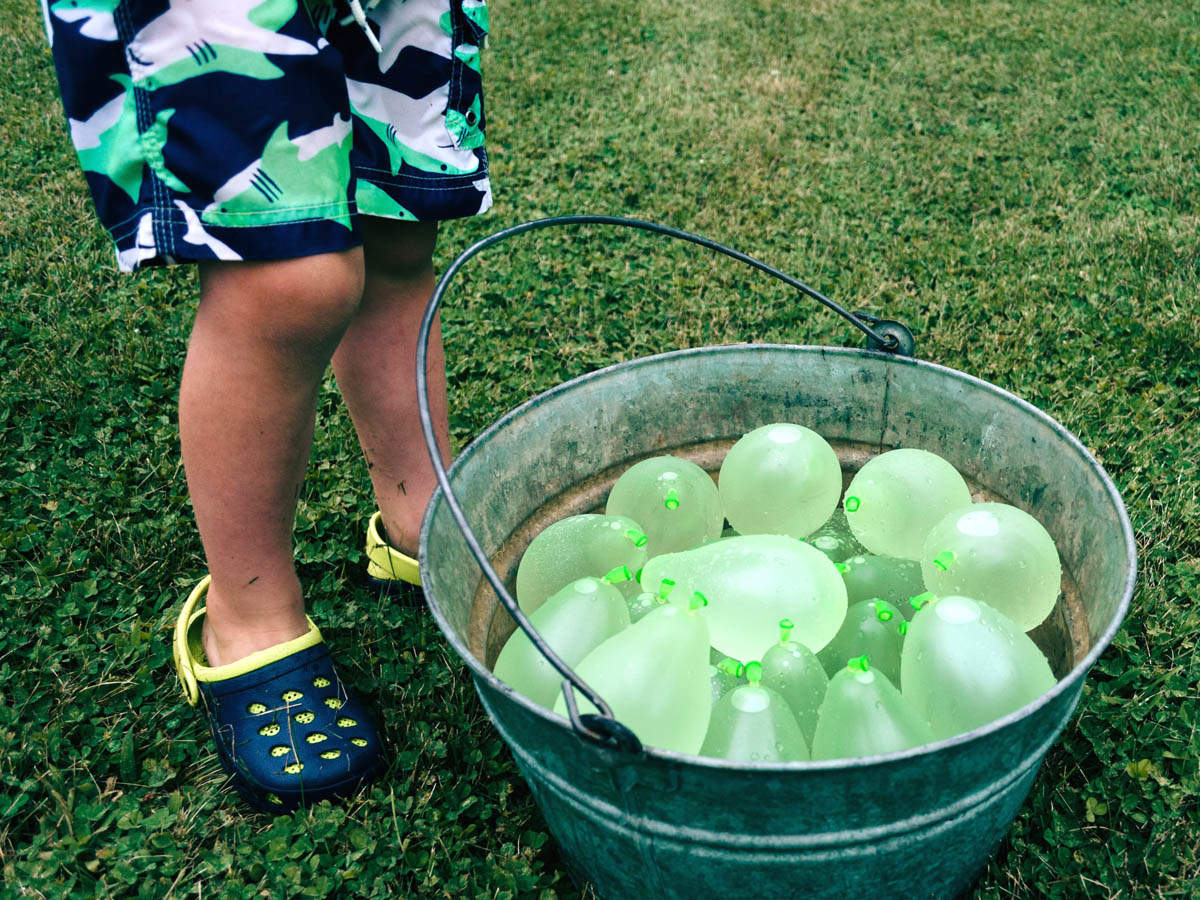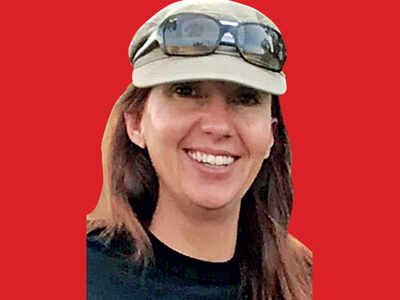
Jeanne Tarrant, also known as the ‘frog lady of South Africa’, is one of the winners of the prestigious 2020 Whitley Awards for wildlife conservation. Working with the Endangered Wildlife Trust (EWT), Tarrant spoke to Srijana Mitra Das at Times Evoke about what drew her towards conserving threatened amphibians, the main challenges — and the inspiration which drives her:
What drew you towards protecting amphibians?
I’ve always had compassion for nature and animals, although, to be honest, growing up, I was somewhat scared of frogs! But studying them and learning about what an amazingly diverse group amphibians are and how they are adapted to just about every conceivable habitat on Earth, I grew to appreciate these animals. They are vital not only for their own intrinsic value and beauty but also for the absolutely crucial role they play in ecosystems, providing food and controlling insects. Alongside, the growing evidence that amphibians are the most threatened animals on the planet — 41% are classed as ‘Critically Endangered’, ‘Endangered’ or ‘Vulnerable’ by the IUCN — really highlighted to me the need for more conservation action for this group. Amphibians represent freshwater health — that’s crucial to the survival of all life on Earth.
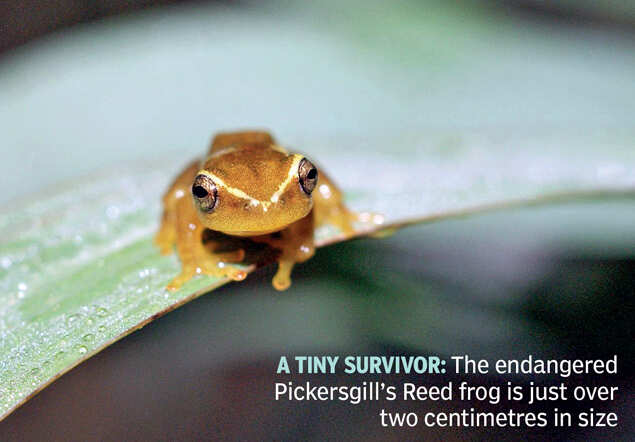
What are some key challenges amphibians face?
General apathy is probably the biggest threat to all biodiversity today — this translates into the ‘business as usual’ or ‘business at all costs’ approach, which leads to environmental destruction, driven by greed and the very short-sighted view that economic growth is all that matters. There is a growing awakening though that our economies depend entirely on nature and the future looks dire without urgent action on habitat destruction, climate change, pollution and disease — all of which directly impact amphibians. Without nature-based solutions, life as we know it will not persist beyond the next century.
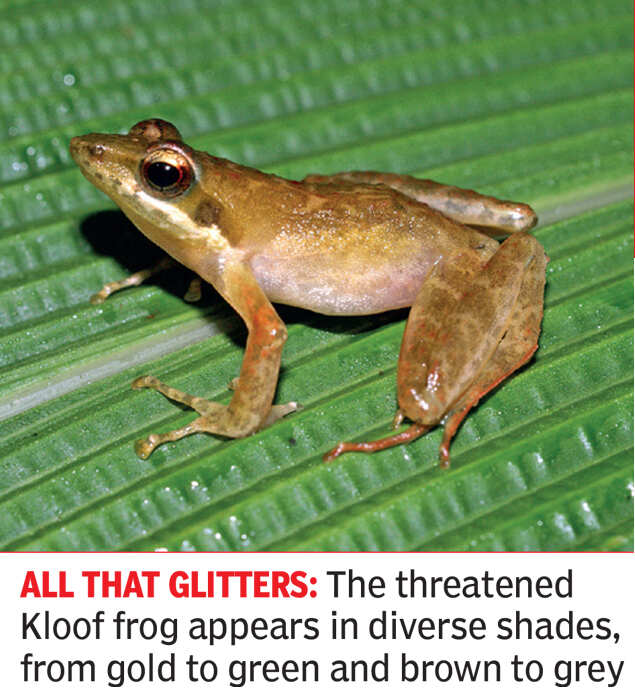
Photos courtesy: Jeanne Tarrant
What are some pathbreaking solutions you’ve come up with towards saving amphibians?
We focus on addressing major threats to amphibians. To address habitat loss, we work towards formal declarations of protected areas, focused on flagship threatened species. We also assist landowners in the management of these spaces. We work towards changing behaviours to the benefit of amphibians and the natural environment. While the global outlook for amphibians is not good, having increased from 33% to 41% threatened over the past decade, there are success stories too. For example, the Pickersgill’s Reed Frog, which is one of our key focal species, was ‘Critically Endangered’ in 2010, but downgraded to ‘Endangered’ in 2016, having been discovered at many additional sites through our surveys as well as benefitting from improved conservation measures.
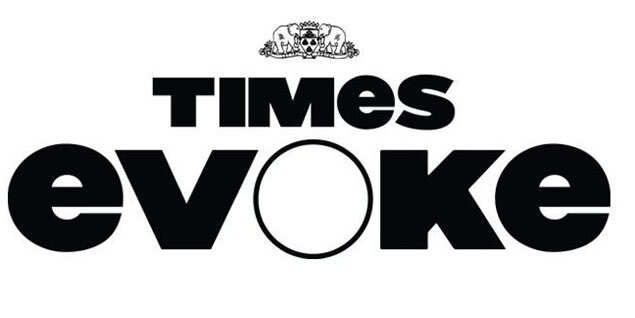
How do public attitudes and behaviours impact conservation — and can these be changed for the better significantly?
The attitudes of the public towards conservation and species have a massive impact — that’s why it is absolutely crucial that effective messaging forms part of any conservation initiative. It is more important than ever that science is trusted and respected. We do a lot of work towards improving knowledge and attitudes towards frogs, especially in the South African context where many people fear frogs due to superstitions. Through educational work, I’ve seen it is definitely possible to change behaviour and attitudes.
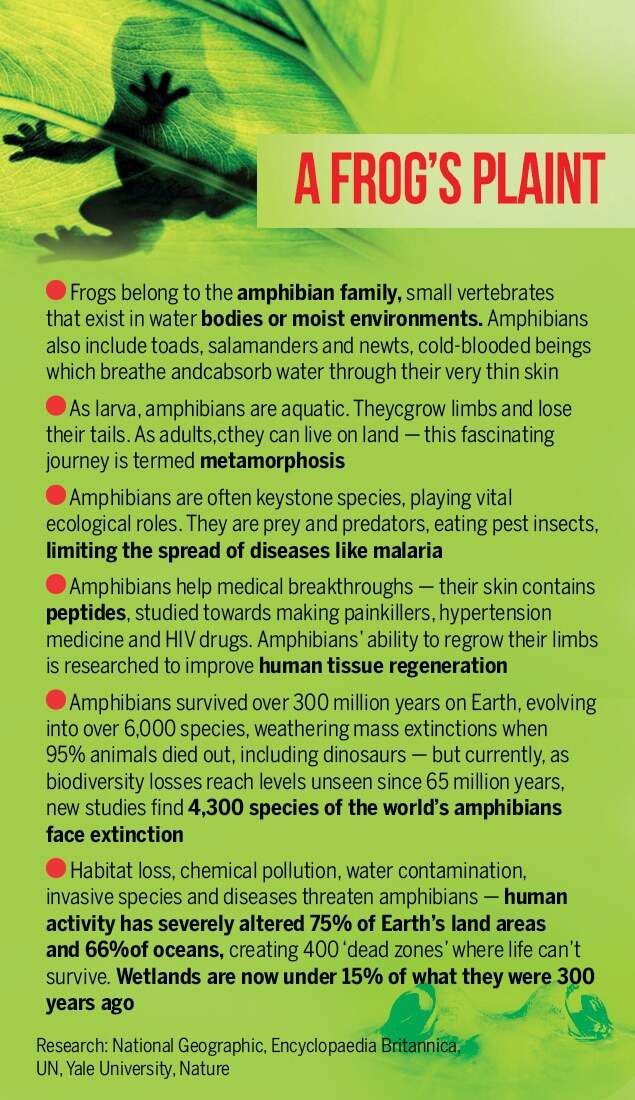
How can ordinary people help in wildlife conservation attempts?
People’s everyday choices can have a massively positive impact on the planet. Ultimately, all environmental issues are linked to the fact that our single Earth is having to support nearly eight billion people. What we choose to consume, how we consume it and our family sizes, all these factors directly contribute to how resources are used. Aside from learning more about your local natural environment and its unique species, each person can also make conscious choices about their consumption and family sizes. Also, we must start appreciating the smaller things in life — insects that pollinate our food crops, frogs that indicate clean water, snakes that keep rodents in check…the list is endless!
Is wildlife conservation work sometimes a lonely experience?
Well, when I started the Threatened Amphibian Programme for the Endangered Wildlife Trust, I was a team of one! I think at one of the first talks I gave, two people showed up — but we now have hundreds of people attending our events. Today, I work with a very wide network of conservationists, both in South Africa and placed around the world.
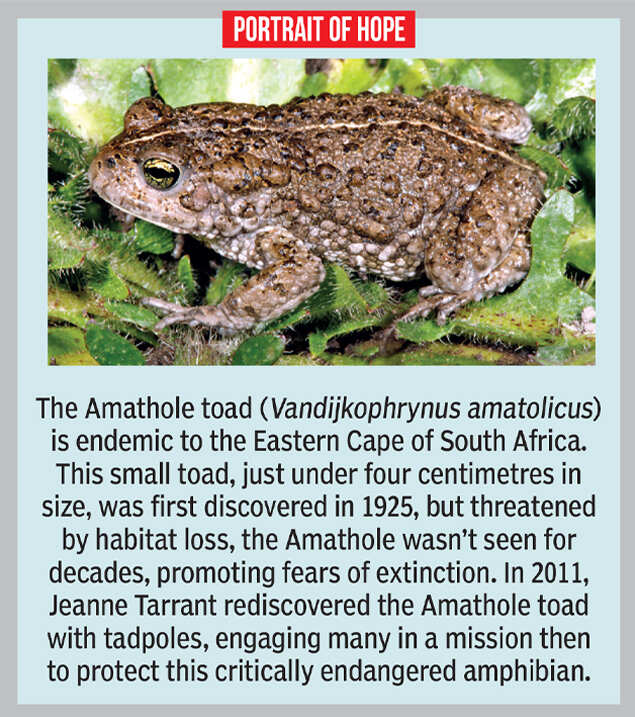
In all your endeavours, what has kept you going?
Sometimes, working in conservation feels like a losing battle. Environmental problems, from climate change to the current pandemic, only seem to be getting worse. However, there are also amazing stories of hope, where species are brought back from the edge of extinction or amazing spaces are protected. Working in conservation means that you also work with hugely passionate people, who always inspire me. Rediscovering the Amathole toad in 2011, which wasn’t seen for 13 years prior, seeing threat statuses downgraded and seeing children learning and appreciating something new about wildlife — these moments allow me to continue this work.
What drew you towards protecting amphibians?
I’ve always had compassion for nature and animals, although, to be honest, growing up, I was somewhat scared of frogs! But studying them and learning about what an amazingly diverse group amphibians are and how they are adapted to just about every conceivable habitat on Earth, I grew to appreciate these animals. They are vital not only for their own intrinsic value and beauty but also for the absolutely crucial role they play in ecosystems, providing food and controlling insects. Alongside, the growing evidence that amphibians are the most threatened animals on the planet — 41% are classed as ‘Critically Endangered’, ‘Endangered’ or ‘Vulnerable’ by the IUCN — really highlighted to me the need for more conservation action for this group. Amphibians represent freshwater health — that’s crucial to the survival of all life on Earth.

What are some key challenges amphibians face?
General apathy is probably the biggest threat to all biodiversity today — this translates into the ‘business as usual’ or ‘business at all costs’ approach, which leads to environmental destruction, driven by greed and the very short-sighted view that economic growth is all that matters. There is a growing awakening though that our economies depend entirely on nature and the future looks dire without urgent action on habitat destruction, climate change, pollution and disease — all of which directly impact amphibians. Without nature-based solutions, life as we know it will not persist beyond the next century.

Photos courtesy: Jeanne Tarrant
What are some pathbreaking solutions you’ve come up with towards saving amphibians?
We focus on addressing major threats to amphibians. To address habitat loss, we work towards formal declarations of protected areas, focused on flagship threatened species. We also assist landowners in the management of these spaces. We work towards changing behaviours to the benefit of amphibians and the natural environment. While the global outlook for amphibians is not good, having increased from 33% to 41% threatened over the past decade, there are success stories too. For example, the Pickersgill’s Reed Frog, which is one of our key focal species, was ‘Critically Endangered’ in 2010, but downgraded to ‘Endangered’ in 2016, having been discovered at many additional sites through our surveys as well as benefitting from improved conservation measures.

How do public attitudes and behaviours impact conservation — and can these be changed for the better significantly?
The attitudes of the public towards conservation and species have a massive impact — that’s why it is absolutely crucial that effective messaging forms part of any conservation initiative. It is more important than ever that science is trusted and respected. We do a lot of work towards improving knowledge and attitudes towards frogs, especially in the South African context where many people fear frogs due to superstitions. Through educational work, I’ve seen it is definitely possible to change behaviour and attitudes.

How can ordinary people help in wildlife conservation attempts?
People’s everyday choices can have a massively positive impact on the planet. Ultimately, all environmental issues are linked to the fact that our single Earth is having to support nearly eight billion people. What we choose to consume, how we consume it and our family sizes, all these factors directly contribute to how resources are used. Aside from learning more about your local natural environment and its unique species, each person can also make conscious choices about their consumption and family sizes. Also, we must start appreciating the smaller things in life — insects that pollinate our food crops, frogs that indicate clean water, snakes that keep rodents in check…the list is endless!
Is wildlife conservation work sometimes a lonely experience?
Well, when I started the Threatened Amphibian Programme for the Endangered Wildlife Trust, I was a team of one! I think at one of the first talks I gave, two people showed up — but we now have hundreds of people attending our events. Today, I work with a very wide network of conservationists, both in South Africa and placed around the world.

In all your endeavours, what has kept you going?
Sometimes, working in conservation feels like a losing battle. Environmental problems, from climate change to the current pandemic, only seem to be getting worse. However, there are also amazing stories of hope, where species are brought back from the edge of extinction or amazing spaces are protected. Working in conservation means that you also work with hugely passionate people, who always inspire me. Rediscovering the Amathole toad in 2011, which wasn’t seen for 13 years prior, seeing threat statuses downgraded and seeing children learning and appreciating something new about wildlife — these moments allow me to continue this work.
Download
The Times of India News App for Latest India News

Coronavirus outbreak
Trending Topics
LATEST VIDEOS
India
 TOI daily: Race for Indian covid vaccine hots up, human trials on in 6 cities
TOI daily: Race for Indian covid vaccine hots up, human trials on in 6 cities  Government extends cap on domestic airfare for 3 months till November 24
Government extends cap on domestic airfare for 3 months till November 24 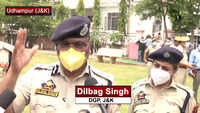 Pakistan, its agencies aim to send terrorists while they violate ceasefire: J&K DGP
Pakistan, its agencies aim to send terrorists while they violate ceasefire: J&K DGP 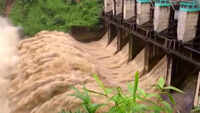 Assam floods: Villages submerge in Nagaon after gates of hydro project open
Assam floods: Villages submerge in Nagaon after gates of hydro project open  Over 15 million RTPCR COVID tests performed so far: Harsh Vardhan
Over 15 million RTPCR COVID tests performed so far: Harsh Vardhan  Balance your Mind, Body & Soul: Sleep for Good Health & Wellbeing
Balance your Mind, Body & Soul: Sleep for Good Health & Wellbeing
More from TOI
Navbharat Times
Featured Today in Travel
Quick Links
Coronavirus in MumbaiCoronavirus in KolkataCoronavirus in HyderabadCoronavirus in DelhiCoronavirus in BangaloreCoronavirus symptomsCoronavirus in IndiaWhat is CoronavirusCoronavirus NewsSolar EclipseNPRWhat is NRCCAB BillCAB and NRCRTI BillPodcast newsLok SabhaShiv SenaYSRCPCongressBJP newsUIDAIIndian ArmyISRO newsSupreme Court
Get the app



